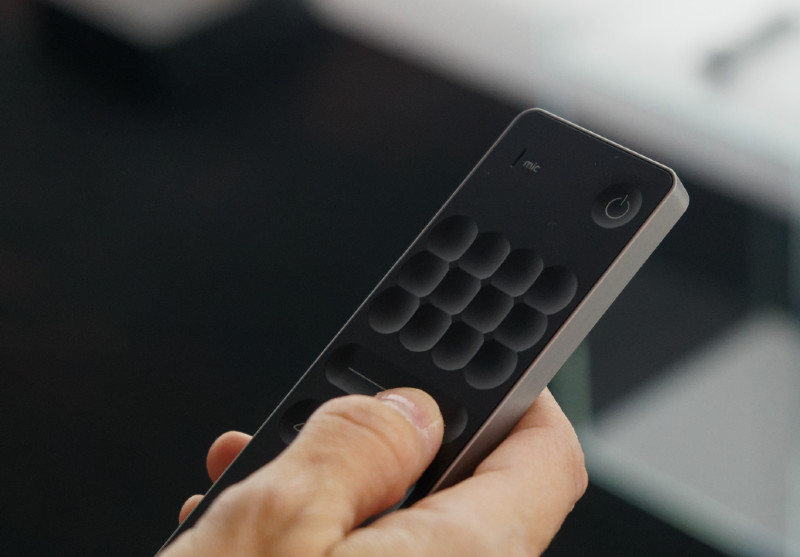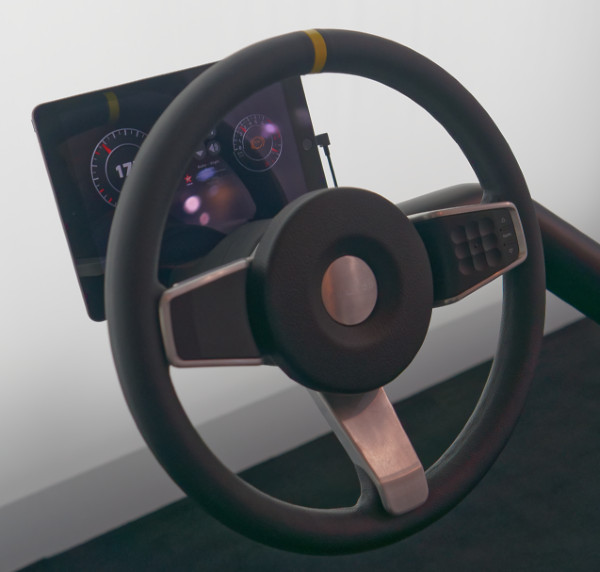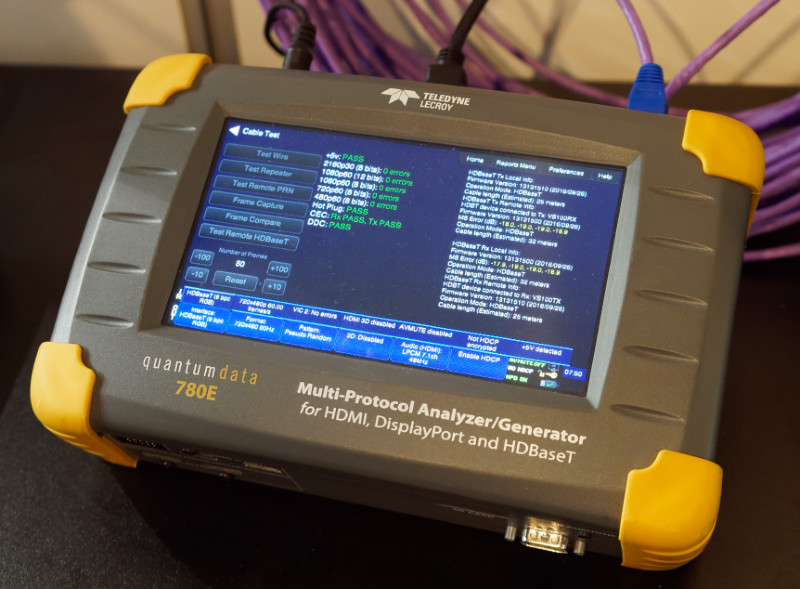Ruwido was showing a new concept – the ‘TicTacTile’ which is (as always) a beautifully assembled remote control that it makes in its own factory in Salzburg. The remote uses a 4 x 3 haptic-equipped panel that makes it very easy to select items on a grid on the display. This is very simple and as I had spent some time on the evening before trying to find something to watch on the TV in my hotel, at a very low rate, one slow channel at a time, I could see the attraction. A key advantage, as always developed by Ruwido, is that the tactile feeling of the remote means that you don’t need to look at the remote while using it. As well as the selection buttons, there is a ‘swipe’ area just below them. The remote also supports voice and the company has been working on this with Tivo for some years.
 Ruwido’s TicTacTile uses Haptics so that users don’t have to look at the remote. Image:Meko
Ruwido’s TicTacTile uses Haptics so that users don’t have to look at the remote. Image:Meko
As well as TV use, the company sees the control mechanism being useful in cars and had an interesting mock-up of the TicTacTile on a steering wheel.
 Ruwido put its remote concept on a steering wheel. Image:Meko
Ruwido put its remote concept on a steering wheel. Image:Meko
SmallHD was showing its 1703-P3X field monitor which supports 100% of DCI P3 that has FullHD resolution and has contrast of 1,500:1 and is intended to compete with OLED. It has 900 cd/m² and has an HDR preview mode. There is also a 450 cd/m² version that costs $3,499. The company showed us how flexible the setup was and how it allows users to really organise the different functions in a very simple way. Inputs include SDI as well as HDMI.
 SmallHD showed how the user interface can be customised. Here, the waveform monitor is shown in a transparent mode on top of the image. Image:Meko
SmallHD showed how the user interface can be customised. Here, the waveform monitor is shown in a transparent mode on top of the image. Image:Meko
Teledyne Lecroy was showing the latest version of its quantumdata 980 test machine which, as we reported from NAB, now supports up to Quad SDI. The company was also showing some test patterns developed with Florian Friedrich and Joe Kane and originally developed for PQ-based HDR. The company is now working on patterns that are suitable for checking HLG. It is also considering how to support HDR10+ as it has tools for testing the metadata in HDR signals.
Also on show was a new handheld system that we reported on last year, but which we looked at for the first time. The 780E consists of a signal generator and analyser pair that can test HDMI, DisplayPort or HDBaseT. The cost of the system is around $4,000.


